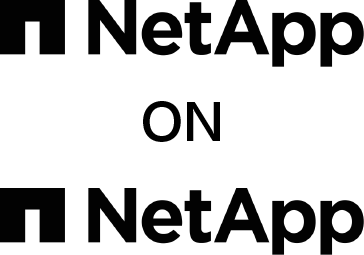Maximizing the value of an automated storage program
By Eduardo Rivera
It’s no secret that -as-a-Service is now a foundational part of IT. Having tools or services available on-demand is an effective and efficient way to deliver a quality experience to users, without going overboard on budget.
For NetApp IT, this extends to Infrastructure-as-a-Service and more specifically, storage. Automating and modernizing our storage management is critical to the success of the enterprise. We’ve transformed – and are continuing to transform – what we automate and how we do it. The end result is a platform that delivers what customers need, when they need it, and how they want it.
Our portfolio
NetApp IT supports a global workforce of 11,000, each with varying needs. We specifically manage infrastructure for the enterprise side, which includes the corporate applications needed to run the day-to-day business. This includes everything form Microsoft 365 to QuoteEdge to ERP. We ensure that those work as intended. To do this, we leverage ONTAP, StorageGrid, and other NetApp staples.
Our infrastructure is constantly evolving as well. New technologies are being consumed all the time, which means we have to keep systems and knowledge ahead of the curve. We have increasing responsibilities with new challenges. We are expected to deliver quickly and rapid self-service is an important part of what we provide.
We do this through a robust hybrid cloud, bringing on-prem with private and public cloud to maximize our flexibility, security, and budget. Automation enables us to do all of this. It wasn’t long ago that storage managers had to create volumes and move it to a database administrator. Now, the process is far more seamless.
What changing needs mean to storage
The biggest evolution has come from the end user. They want a quick experience in which they have control and can do things themselves. They want to consume storage services through a single portal instead of logging onto a filer and creating a volume. They want to be able and pick and choose what they want, check out, and get their product like an ecommerce site. They want to be able to say, “I just want a file, I just want an object. I just want it to work. I want to get this much of that, and I want it to work at this performance tier.”
This can only be done by embracing automation. The infrastructure team is hands off and volume creation is done automatically. It’s very much hands-off, aside from the initial setup. The storage admin is freed from standard tasks and able to do more impactful work.
Our IaaS workflow
We’ve attempted to simplify the process as much as possible. The end user quickly gets the storage they need, with minimal impact on our day-to-day business.
– Request made – The user makes a storage request through the self-service portal.
– CMDB is updated – The request automatically updates the CMDB.
– Call to deploy is made – Our Ansible tower infrastructure is contacted and a playbook deploys storage.
– Volumes created – Volumes are established and settled into a private or public cloud environment.
– Storage provided – The user gets their storage and moves on with their day.
This may be an oversimplification, but the end user doesn’t care how complex – or uncomplex – the process is. They just want to get what they need and move on. Our automated storage program does that.
The storage consumer is ever evolving. What they need now may not be what they need in 12 months. However, by delivering storage at the speed of code – without burdening our staff – we’re well prepared to shift and adapt to changing needs quickly. This keeps the enterprise running and better optimized.


